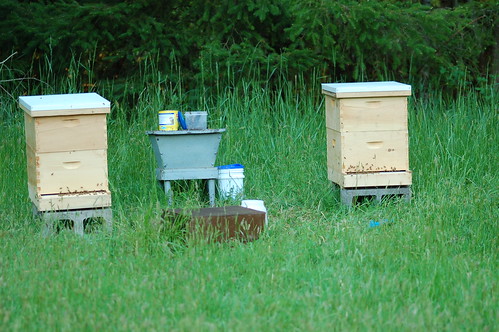how do you go about raising queen honey bees and then get them into an empty hive ?

Image by friendsoffamilyfarmers
Tipping Tree Farm, the small diverse farm in Colton raises bees and honey in addition to a variety of veggies, and eggs.
Question by rick m: how do you go about raising queen honey bees and then get them into an empty hive ?
I have access to royal jelly along with dozens of hives (active and empty). How do I establish new hives? I’m overseas and can’t speak/read the language well enough to ask or use the library. Thanks
Add your own answer in the comments!

2 Responses to how do you go about raising queen honey bees and then get them into an empty hive ?